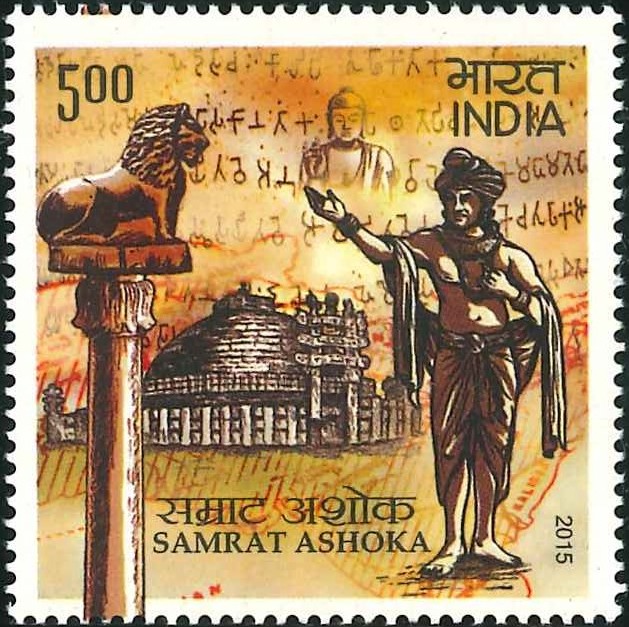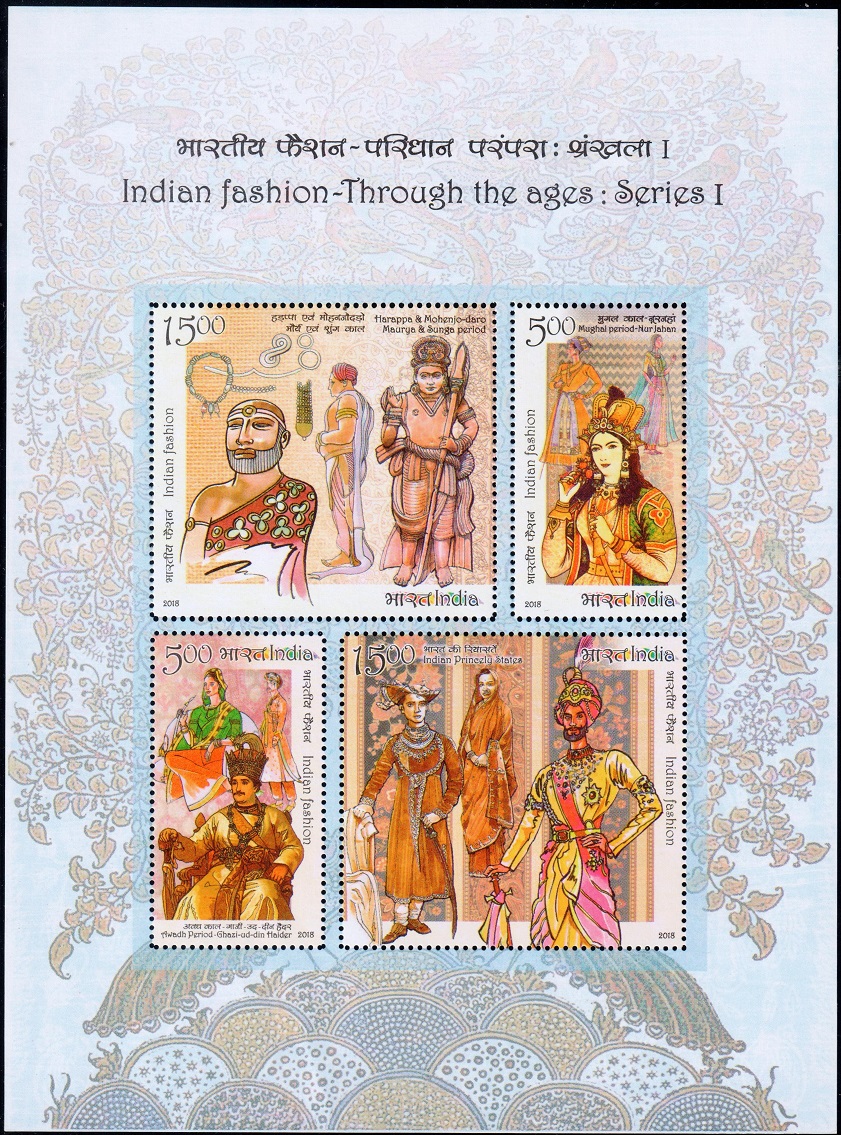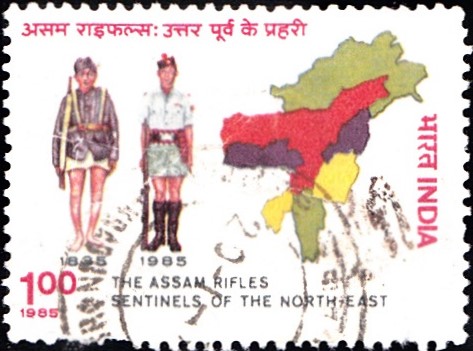
Chandragupta Maurya
A commemorative postage stamp on the Emperor Chandra Gupta Maurya, founder of the Maurya Empire in Ancient India :

 Issued by India
Issued by India
Issued on Jul 21, 2001
Issued for : Owing to his remarkable military successes and insight into state craft, Chandragupta Maurya stands out as one among the most colourful personalities of Indian history. The Department of Posts is proud to issue a postage stamp on this great monarch of ancient India.
Design : The stamp and first day cover portray an artist’s impression of Chandragupta Maurya, along with images from the punch marked coins of the Mauryan period.
Credits :
Stamp & FDC : Sankha Samanta
Cancellation : Alka Sharma
Type : Stamp, Mint Condition
Colour : Six Colour
Denomination : 400 Paise
Overall size : 4.06 x 4.82 cms.
Printing Size : 4.06 x 4.82 cms.
Perforation : 13.5 x 13.5
Paper : Matt Chromo
Stamps Printed : 3 million
Number per issue sheet : 40
Printing Process : Photo Offset
Printer : Calcutta Security Printers Ltd.
Name : Chandragupta Maurya
Born on 340 BCE at Pataliputra, Bihar, India
Died on 298 BCE at Shravanabelagola, Karnataka, India
About :
- Though historians often credit the Nandas of Magadha for being the first empire builders of India, it was with Chandragupta Maurya, the young adventurer who unseated the Nandas in 321 B.C. that the imperial idea found a definite expression.
- A strategic geographical position as well as an abundance of natural resources had already created favourable conditions for the emergence of an empire with Magadha as its nucleus. By virtue of its location, Magadha had control over the lower plain of the Ganga, including the riches from river trade. The forests provided timber for building activities and the presence of local iron ore deposits enabled the manufacture of implements and weapons. The land was fertile, yielding rich harvests. Land taxes became a substantial source of revenue for the treasury, in tum making it possible to raise the mighty army with which the Mauryan kings overran the whole of India.
- Indika, the memoirs Megasthenes, the Greek Ambassador to the Court of Chandragupta Maurya and Arthashastra the compendious work of Chanakya are the main sources from which we can learn and infer about the life and times of Chandragupta Maurya. It is believed that Chandragupta hailed from a humble background. He did not have the military might to match the Nandas, yet managed to acquire the throne and keep it, making use of the strategies of Chanakya, his chief advisor. Chandragupta expanded the empire steadily and brought under his suzerainty not only Bihar and good portions of Orissa and Bengal, but also western and north-western India, and the Deccan. Leaving Kerala, Tamil Nadu, and parts of north-eastern India, the Mauryas ruled over the whole of the subcontinent. In the north-west they had sway over certain areas which were not included even in the British empire.
- Chandragupta Maurya was a far-sighted ruler. He not only expanded his territories, but also established a well organised administrative system and gave it a sound financial base, thus laying the foundation for an enduring empire. He had set a high ideal and is stated to have believed that his happiness lay in the happiness of his subjects and that in their troubles lay his troubles.
- Chandragupta‘s reign lasted for about 25 years. According to Jain tradition, he adopted Jainism, having been influenced by the saint Bhadrabahu. He is believed to have abdicated the throne in favour of his son Bindusara and pursued a spiritual life thereafter.
- Text : P. N. Ranjit Kumar (Based on material received from the ICHR Library, New Delhi).








[…] army, helped in saving a lost American battalion from being captured by the Germans. In India, Chandragupta Maurya, Emperor Ashok and the Mughal Emperors used pigeons as message […]
[…] the third ruler of the Maurya Empire who ruled from 273 B.C.E. to 232 B.C.E. He was the grandson of Chandra Gupta Maurya and son of Bindusara. After a number of military conquests, Ashoka reigned over most of South Asia […]
[…] By the 4th century B.C., as recorded by the Greek traveller Megasthenes who visited the court of Chandragupta Maurya, ship-building was an active industry and maritime ties with far-flung trading posts had become […]
[…] army, helped in saving a lost American battalion from being captured by the Germans. In India, Chandragupta Maurya, Emperor Ashok and the Mughal Emperors used pigeons as message […]
[…] 40 kms from Patna, and has been a center for the animal trade since the fourth century B.C. Chandragupta Maurya, the great Indian emperor who ruled the country from Pataliputra (now Patna) in those days is said […]